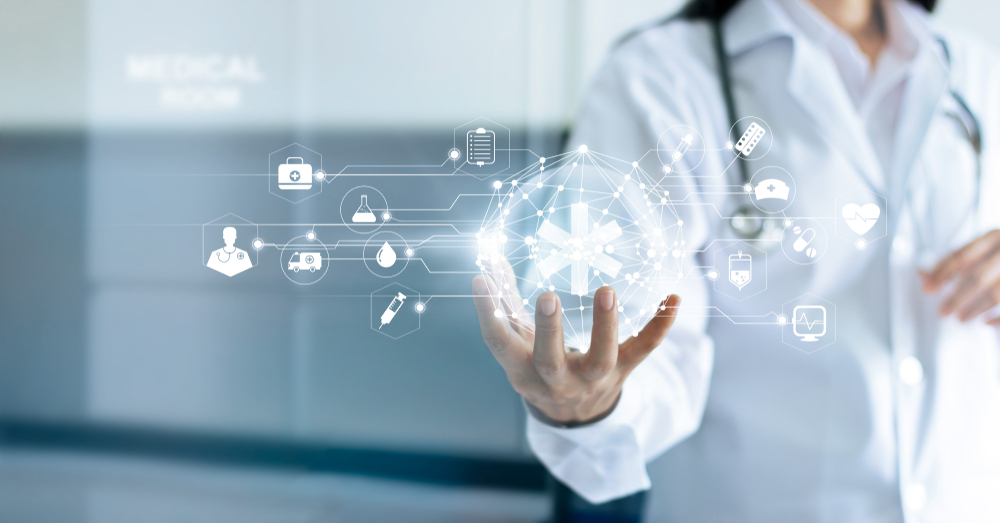Giving Thanks for Healthcare Innovation
We’re Grateful for Groundbreaking Advancements
Innovation is changing the healthcare industry before our eyes. At the heart of this movement lies technology and the internet, and the advances in use right now are just the tip of the iceberg. What seems groundbreaking now paves the way for the future.
We can give thanks for the people who push the boundaries of science. Without their ideas, many healthcare problems would continue to go unsolved and people with special needs would get less effective healthcare. With ongoing innovation, technology can create custom solutions. Healthcare providers can use data and devices to reach more people.
Here we’ll review some of the many healthcare innovations in use today and how they make an impact.
Expansion of Rural Telehealth
People seeking healthcare in rural areas face an uphill battle. Residents in rural areas are at an increased risk for serious health conditions compared to people in urban areas. The time and money spent traveling can make getting even basic health care difficult. Because of these issues, people often go without care.
While telehealth can help bridge this gap, it has been slow to develop in rural and remote communities. During the pandemic, the use of telehealth grew worldwide. This growth made it clear that rural telehealth expansion needed to be a priority.
In August of 2021, the US government pledged funds to support telehealth in rural areas. This is just one piece of the puzzle with remote healthcare, but it shows a commitment to improving access to healthcare in underserved places. This funding will support rural health in many ways.
- Training and support for providers in rural areas; training is about helping people with complex health issues
- Support for health care providers with telehealth services or want to provide them
- Assessing and improving rural healthcare services that use telehealth
Medical 3D Printing
3D printing has been around since the 1980s, but has taken great strides in the last decade. This growth has led to many creative products and solutions. Medical companies already create medical devices via 3D printing. These include implants, prosthetics, and guides for surgical instruments. Some of the newest applications include the following:
- Using materials that kill bacteria, making it safer to use inside the human body
- Making COVID-19 test swabs
- Printing sensors directly onto human tissue
- Building more accurate and precise printing machines
3D printers excel at making exact copies of specific items, but they can also make custom items unique to a patient’s needs. This becomes a vital solution when standard-size items don’t work for a person. 3D printing can reduce waste and save on materials as well. As technology improves, the potential for 3D medical printing is immense.
Internet of Things and Healthcare Data
The Internet of Things (IoT) is all around us. It’s the network of devices, software, and people interacting through the internet. Smartphones, smart appliances, and wearable devices are part of our everyday lives.
The Internet of Things is a vital part of the medical field. The IoT helps healthcare providers give better care in many ways. Connected devices help providers with more accurate recordkeeping. They also make it easier for providers to monitor vital signs and get more accurate diagnoses.
Here’s how innovations involving the IoT can make an impact.
- Faster and more complete information transfer – May reduce errors and avoid delays
- Improved monitoring technology – Vital signs are more accurate; information is shared across multiple devices
- Remote monitoring – Healthcare providers can gather vital information from a distance
- Improved virtual care – Better access to people who can’t easily come in person (remote areas, fragile health, etc.)
- Precision medicine – Wearables tracking long-term information about a person’s health
Apps and Electronic Health Records
If there’s something you need to know or get done, there’s probably an app for it. Healthcare is no exception. As the importance of the internet grows in healthcare, the app market is expanding at a similar rate.
More healthcare providers are using apps to handle scheduling, billing, and check-in tasks. These apps save time and improve accuracy. In the future, apps will do more and connect with data. This will enhance the experience both for healthcare providers and consumers.
Electronic records are now being designed to connect better across multiple devices and platforms, in turn making healthcare information more accessible. This need was no more apparent than during the COVID-19 pandemic. People needed better access to their healthcare information. They also needed quality remote services. As telehealth services expand, electronic health records will follow.
Electronic Prescribing
The opioid crisis has affected millions in the last three decades. Doctors overprescribed opioids for many years. The alarming rate of addiction and death finally prompted a change. Opioids are still useful in some ways, but many people at risk for addiction are still getting easy access.
The healthcare industry and government are trying to change things. People addicted to opioids often see multiple doctors. Some get these medications from non-medical sources, too, but doctors still overprescribe and the current tracking system has not always been reliable.
A recent study looked at a prescription drug monitoring program. It used electronic prescriptions for opioids. The state of New York launched this program in 2012. Electronic prescribing was made law in 2016. This new system has allowed prescriptions to be better managed and tracked. This change has reduced the number of opioid prescriptions per year as tracked by Medicare, and with the notable success of this study, other states will likely consider this approach.
Conclusion
It’s fair to say that healthcare innovation is growing by leaps and bounds. Some solutions in use now didn’t seem possible a decade ago. Current innovations can help healthcare providers give better and more advanced care. There’s no substitute for the personal attention you get from a caring provider, but innovations can do a lot to make their care more effective.
